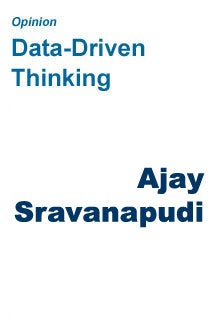 “Data-Driven Thinking” is a column written by members of the media community and containing fresh ideas on the digital revolution in media.
“Data-Driven Thinking” is a column written by members of the media community and containing fresh ideas on the digital revolution in media.
Today’s column is written by Ajay Sravanapudi, CEO at LucidMedia.
“If it is in fact a hand puppet, which finger is the head of the pony?” This question nicely sums up the brand safety fears while running a display campaign. In my last column, I explored the recent demand-side platform (DSP) trend focusing on its potential benefit to agencies. This month, I want to look more closely at one specific aspect of the DSP movement: brand safety in real-time bid (RTB) inventory.
Real-time bidding is the latest positive evolutionary change sweeping the display advertising industry this year. Despite its promise of efficiency and scale, many buyers view RTB inventory as potentially brand unsafe. Contrary to these expectations, we have found that, with the right technology, RTB is the most effective and efficient means of procuring brand-safe inventory at scale. This is so because (a) impression bid requests come with a lot of useful data attached and (b) the DSP can use this impression-level data to filter for brand safety in real-time. Much of the impression level data can be used with minimal effort to implement a poor man’s brand safe filter like geographic, site level, day parting, etc. Any DSP worth the price of admission should implement this kind of minimum filtering. However, this is just scratching the surface. What is really needed for true brand safety is technology that can perform a deep semantic analysis at the page-level.
Analyzing impressions in real-time for meaning, profanity, and objectionable content means you have to do some very robust natural language processing (NLP), especially considering the stringent SLAs required by the big exchanges. It takes a big technology investment to do robust content inspection effectively. Inspecting images and video for brand safety is a different beast altogether and best left for a future column. In the absence of technology one can only trust the intermediaries that the impression is about a specific topic and that it does not contain any profanity or other objectionable concepts.
Performing a deep semantic analysis of the page requires access to the content of the page. One of the common challenges to a deep semantic scan is the inability to analyze content when the ad tag is nested two levels or more within an iFrame. The short answer is that browser security prevents the tag from accessing the content of the page. In a daisy chaining scenario, when one network’s ad server hands the ad off to another network (i.e. when an impression is resold), the first iFrame gets shoved inside another iFrame increasing the nesting level and making it impossible for the tag to analyze the page. But iFrames are far less of a problem with exchange inventory.
In an RTB-enabled world there is far less need for the old nested iFrame approach as publishers deploy exchange tags on their inventory making it more accessible to a deep semantic scan. By doing so, they are letting exchanges handle the sell-through duties. Often publishers will include a supply-side optimizer to drive maximum yield for them. This trend removes the need for endless daisy chaining of network tags together with each wrapping the same ad space in yet another iFrame.
You begin to see that the term RTB does not tell the whole picture. Implicit to bidding and performance, be it real-time or otherwise, is this priceless notion of impression inspection. And it is this critical inspection step of the RTB process that is guaranteeing brand safety in online display advertising for the first time. And because it is happening in real-time we are talking about true preemptive brand safety and not just the older and more reactive type of post-impression validation.
In the brave new world that is display advertising today, brand safety is more than just a site list. Now it comes down to the technological prowess of your platform.
Follow LucidMedia @lucidmediaVIP and AdExchanger.com (@adexchanger.com) on Twitter.











